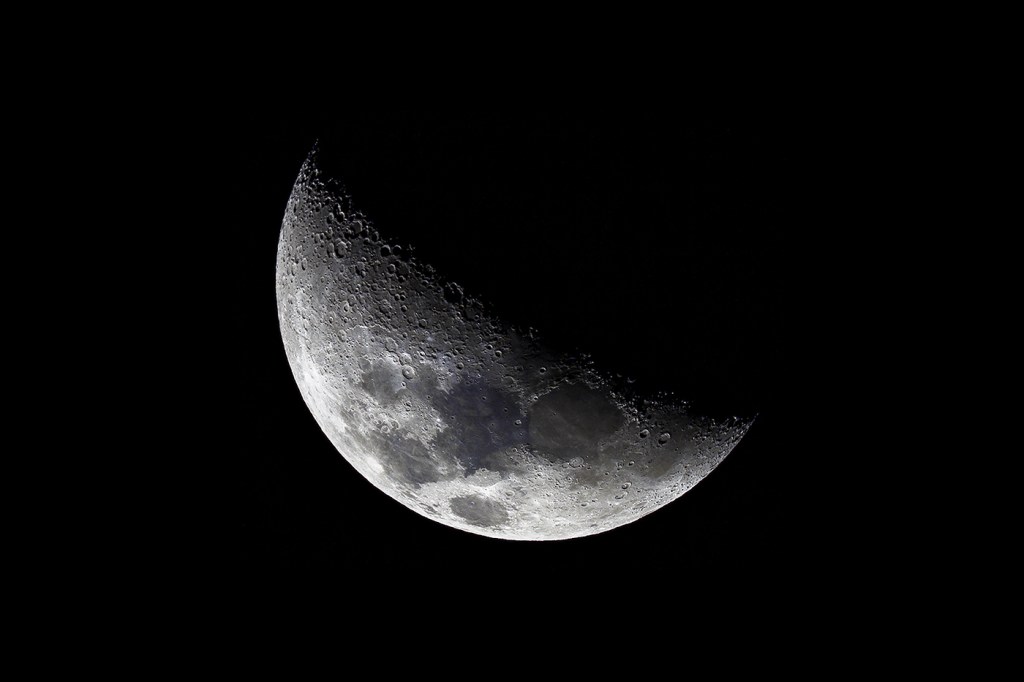What time is it on the moon? We may soon know, thanks to NASA project
Scientists are looking to establish a time zone on the moon. A Northeastern physicist explains why time functions slightly differently on the moon.

From sundials and water clocks to modern atomic timekeeping, methods for telling time on Earth — to mark the divide between night and day, month to year, etc. — have evolved over thousands of years.
Now, scientists are bringing their technological knowhow to the moon in order to establish time standards there and elsewhere in space.
The White House has directed NASA “to establish time standards at and around celestial bodies other than Earth,” instructing the agency to “develop celestial time standardization with an initial focus on the lunar surface” by December 2026.
Arun Bansil, university distinguished professor of physics at Northeastern, says that time functions slightly differently on the moon because the gravitational force is weaker there than on Earth.
Northeastern Global News spoke to Bansil to learn more about the science behind the White House’s latest project. His comments have been edited for brevity and clarity.

Does time behave differently on the moon? What about on other planets?
This is a fascinating question. It may seem bizarre that time fundamentally does not behave the same way on Earth, moon and other parts of the solar system. Two perfectly synchronized clocks will in principle stay synchronized on Earth. But, if we take one of these clocks to the moon, they will no longer remain synchronized. The clock on the moon will gain about 58 microseconds every 24 hours. The clocks are not defective — the time itself runs faster on the moon. This translates into an astronaut living on the moon with a 2-second shorter lifespan compared to Earth, which may not sound like much, but uncertainties of microseconds would wreak havoc in the world of electronic communications between satellites and space stations.
Why does time behave differently on Earth and moon?
The behavior of time is a very tactile, real-world consequence of the great theory of relativity of Einstein. Before Einstein, space and time were considered independent entities, and a second represented the same amount of time elapsing anywhere in the universe. Einstein’s deep insight into the workings of nature changed this classical view of time through his discovery of two revolutionary theories: the Special Theory of Relativity and the General Theory of Relatively.
The Special Theory of Relativity tells us that moving clocks progressively slow down with increasing speed and almost come to a standstill as we approach the speed of light. This effect is difficult to experience in daily life because we only encounter speeds that are minuscule compared to the speed of light, which is 186,000 miles per second. In the atomic world, however, where the particles run around at speeds comparable to the speed of light, large relativistic effects are seen routinely.
The General Theory of Relativity offers another mechanism for the slowing down of time — technically referred to as gravitational time dilation. Gravity can bend space and with it slow down time itself by dilating or stretching the fabric of time. Since larger astronomical objects are typically heavier, the gravity force around them is also greater and so is the associated slowing down of the time. For example, the gravity force on the moon is smaller than on Earth, which results in clocks on Earth running slower than on the moon. The clocks on Jupiter will run even more slowly than on the Earth due the larger mass of Jupiter.
Featured Posts
The actual differences in the behavior of clocks will involve combined effects of gravity and speed and these effects will differ around various astronomical objects and in different parts of the solar system.
How is time synchronized in different parts of Earth and between Earth and moon?
It is important that the time across the globe be kept highly synchronized to avoid chaos in financial markets and electronic communications more generally. For this purpose, the Coordinated Universal Time (UTC) on Earth is maintained through a series of more than 400 highly accurate, networked atomic clocks spread over various parts of the world. The most advanced atomic clocks are so precise as to not lose even a second over the age of the universe. As the activity between Earth and moon is growing, it makes sense to develop an accurate standard time zone for the moon, which could be accomplished by placing a network of atomic clocks on the surface of the moon.











